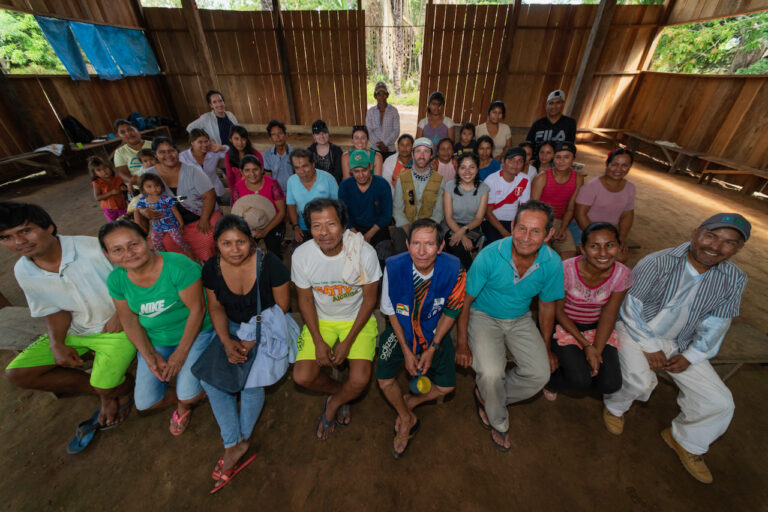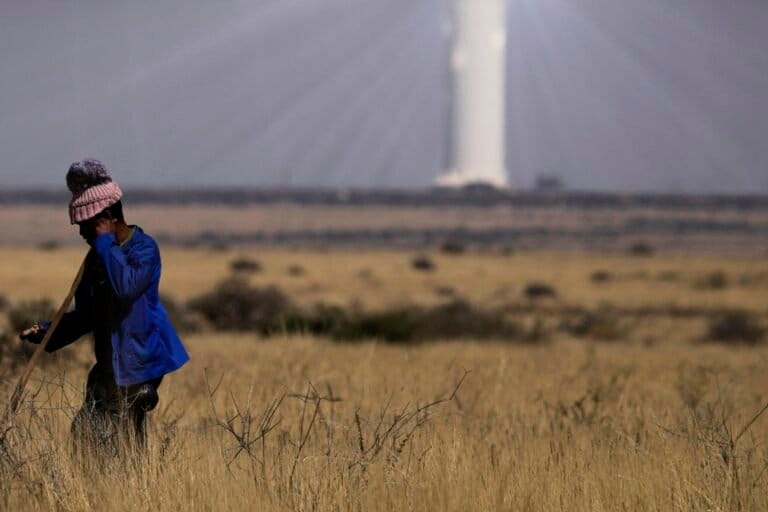- In Kenya’s semiarid Baringo county, Indigenous pastoralists like Salina Chepsat are moving from herding to diversified organic crop farming.
- They benefit from training by the Indigenous Women and Girls Initiative in permaculture and seed saving, but male control of land still restrains how much they can do.
- Boreholes and a shared irrigation scheme enable year-round crops and foster cooperation among different ethnic communities with a history of hostilities.
- Experts call for co-designed strategies combining water access, land restoration and inclusive decision-making to secure food and peace.
BARINGO, Kenya — Salina Chepsat and a neighbor are loading tomatoes into a vehicle in the scorching midday heat. Chepsat picked the produce earlier that morning from her farm in the remote village of Loboi, a stone’s throw from west-central Kenya’s Lake Bogoria. From there, it’s headed to the market in the town of Marigat, 30 kilometers (19 miles) away. Amid the overlapping challenges facing her community in largely semiarid Baringo county — repeated droughts, badly degraded land, and conflict between and among ethnic communities — this tall, 49-year-old widow and mother of three is prospering as a farmer.
This season’s bumper harvest is special to her, Chepsat tells Mongabay, because she plans to use the proceeds of her labor to pay to roof and plaster a new house she’s been building for the past two years.
“When I settled here, I was mainly planting maize, beans and millet. Although I was earning income to sustain me and my children, I wasn’t making enough to construct a good house like the one I am building,” she says. “Unpredictable rainfall has been a limiting factor, especially for maize.”
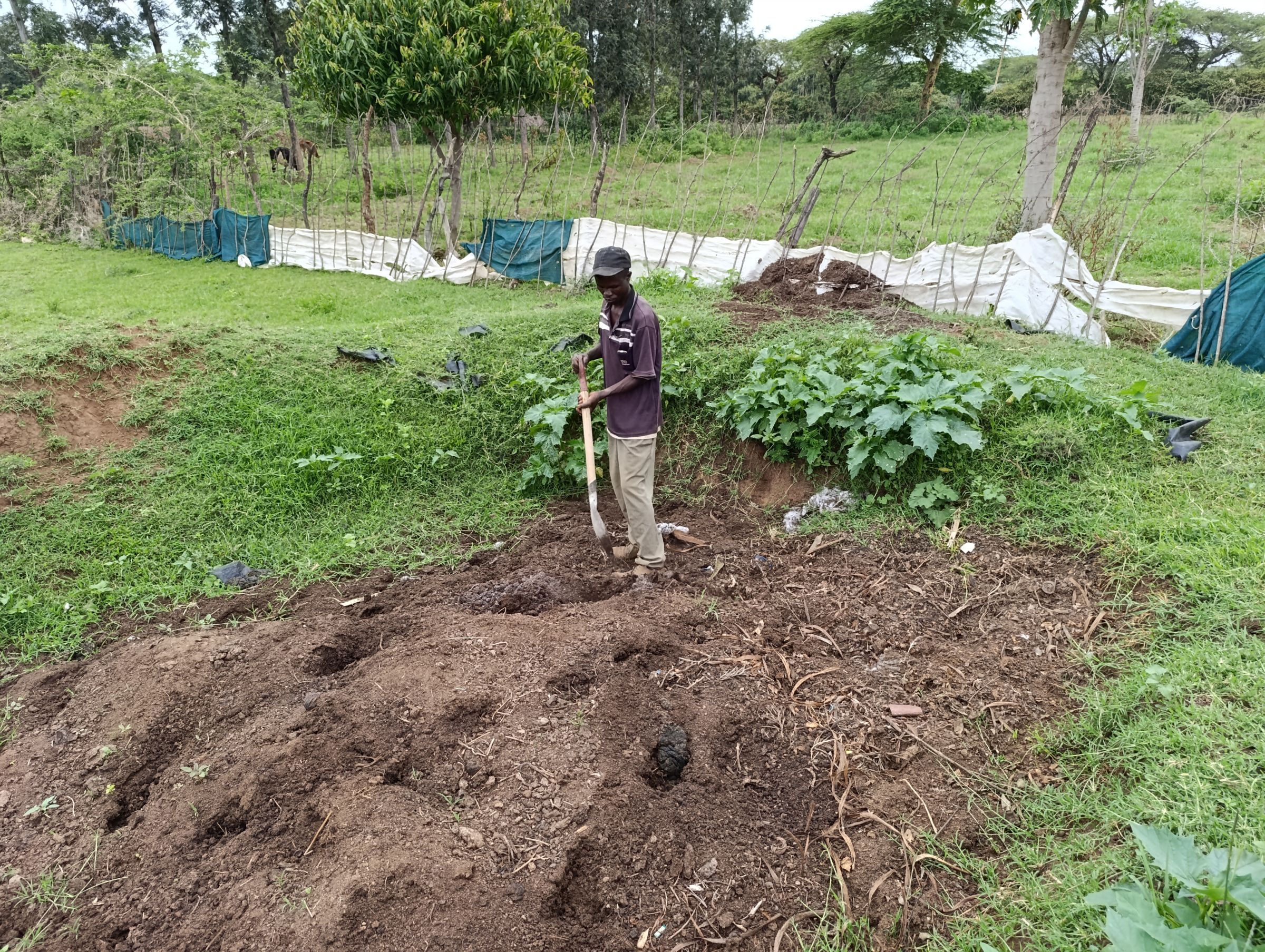
Farming on the rise
Chepsat learned to farm from her parents and grandparents. But for those older generations of Indigenous Endorois, agriculture was usually a sideline to herding livestock. For Chepsat, it has become a more central concern. She still keeps some chickens and goats, but for her livelihood she grows tomatoes, spinach, chili peppers, beans and bananas, as well as maize, millet and sorghum on the 1-hectare (2.5-acre) plot she bought five years ago.
Chepsat credits her recent success to training she received from a local community-based organization, the Indigenous Women and Girls Initiative. IWGI’s training is focused on women, helping them to establish and improve seed banks and kitchen gardens, and plant fruit and other trees.
The training prompted Chepsat to diversify the range of crops she plants and introduced her to techniques to make her own organic pesticides and fertilizer. She prepares soil-enriching compost from her goats’ droppings, weeds she pulls up from around her farm, and organic household waste. To protect her vegetables from voracious white fly, she soaks a mixture of ash and chili for two or three days, then carefully applies the paste to the plants’ leaves.
“When I harvest food from my farm, I am confident what I am eating is safe. I don’t get scared that it could be contaminated with chemicals,” she tells Mongabay. “My farming is purely organic, my grandparents did not use pesticides but practiced crop farming successfully.”
Crucially, Chepsat and her neighbors also benefit from a borehole drilled by an NGO on her farm, enabling them to grow a wider variety of thirsty crops year-round. The well, financed by a grant from the Global Environment Facility, is fitted with a solar pump. The villagers are responsible for its maintenance.
Monica Yator, the founder and leader of IWGI, says she’s pleased the initiative’s training has raised awareness of the potential hazards of agrochemicals among farmers around Marigat.
“The use of pesticides has been very rampant in many farms around here, and we are telling our farmers to avoid using them,” she tells Mongabay. “They are acquired without any knowledge of use, and sometimes tomatoes are harvested the same day they are sprayed. This is a risk to the health of our people and the soils.”

Yator is herself a member of another Indigenous pastoralist community in Baringo county, the Tugen, and the training she offers focuses on helping women from communities like her own, the Ilchamus and Chepsat’s Endorois, to understand and adopt permaculture techniques to improve their harvests in the face of increasingly uncertain conditions. Yator is also the leader of the local chapter of the Global Landscape Forum, which promotes permaculture and agroecology as solutions to adapt to degraded land and climate change.
The GLF is a project of CIFOR-ICRAF, the Center for International Forestry Research and World Agroforestry, where Alex Awiti is a principal scientist and agroecology lead.
Awiti says land across Baringo county is now badly degraded, posing new and difficult questions for many residents. “The unrestricted mobility of pastoralists and livestock has been challenged in the recent years due to rising population with communal land becoming more privately tenable and fenced. This significantly changes the environment in which pastoralism could work.”
Across the African continent, pastoralists have established themselves successfully in broadly similar semiarid landscapes, moving their herds in response to shifting seasons and availability of pasture. The centuries-old traditions and knowledge of their territories is now faltering, confronted by restrictions imposed by governments, expanding agriculture, integration into cash economies, and ever-more-unpredictable weather conditions.
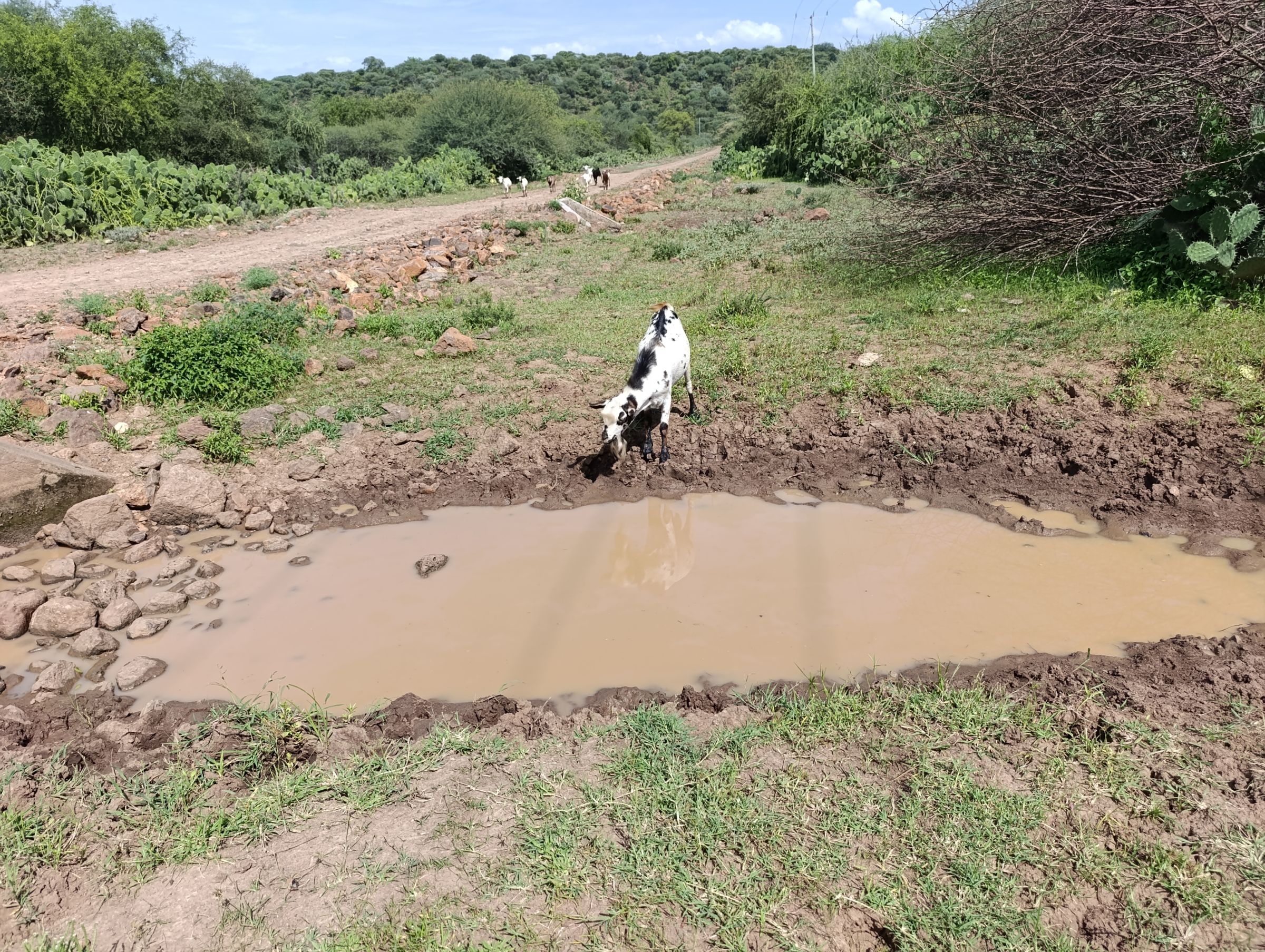
Enter permaculture
Baringo county is increasingly vulnerable to droughts, floods, forest fires and landslides. In the past, herders could move their animals into neighboring Laikipia county in search of pasture, establishing temporary camps there during dry seasons. Joel Koskei, the county government agriculture officer for Marigat, says a growing population and increased subdivision of land have limited the customary practices of rotational grazing and migration that previously protected rangelands from overuse.
Competition for shrinking pastureland has exacerbated conflict between and among communities, Koskei says. “These communities used to set aside land for rotational grazing, but population pressure and high frequency of droughts makes them fight for the limited grazing fields. We are asking them to do crop farming and not just rely on pastoralism,” he says.
Awiti says low rainfall in this region means the land is not really suitable for farming. “What is important here is to realize that we are looking at sustainable regeneration of pasturelands under a different cultural context — where property rights are being sought aggressively and [have weakened] communal claims to land. The protection of soil from unsustainable grazing and access to water and pasture becomes more important,” Awiti tells Mongabay.
But the techniques being advocated by Yator’s IWGI may play an important role in the future flourishing of Ilchamus and Endorois in this landscape. IWGI is offering practical support to pastoralist communities here to turn to agriculture to produce food, and to grow fodder for their livestock.
“We have to make good use of our farms,” Yator says. “We are telling the pastoralists that even with degraded land, we can restore them and make them arable for crops and pasture for their animals.”
But as Yator and her team try to engage women in farming, many immediately run into difficulties securing land to plant on. Traditionally, Koskei says, men make decisions over how the land will be used. “Although a greater percentage of those who work on the farms are women, they have no say on its usage and proceeds from the sales of yields. A few can be allowed to sell milk or vegetables, but surrender the income to the man.”
This, he says, is a major obstacle to food security. Koskei says male decision-makers often prioritize commercially valuable crops like maize and beans. Many farmers have also allocated large portions of their farms to seed production for commercial companies. Others reserve most of their land as pasture for their animals. All of this crowds out space for households to grow food for their own use.
“What they harvest for subsistence consumption is not sufficient,” Koskei says. “Many households have enough food for up to four months after harvesting and [then] start relying on the market to buy food. Many struggle with getting money for this.”
When Chepsat lost her husband 10 years ago, her brothers- in-law took charge of the 4 hectares (10 acres) of land that her husband owned and dedicated it to grazing of their animals.
“It took me 10 years of court battles to get ownership and rights of the land transferred to me,” Chepsat tells Mongabay. “But even after this, I did not feel safe by their threats to harm me, forcing me to purchase the 2 acres where I have settled and doing my farming.”
Yator says IWGI invites men to their trainings as well, so they too can gain an appreciation of the importance of women’s rights to land and decision-making power.
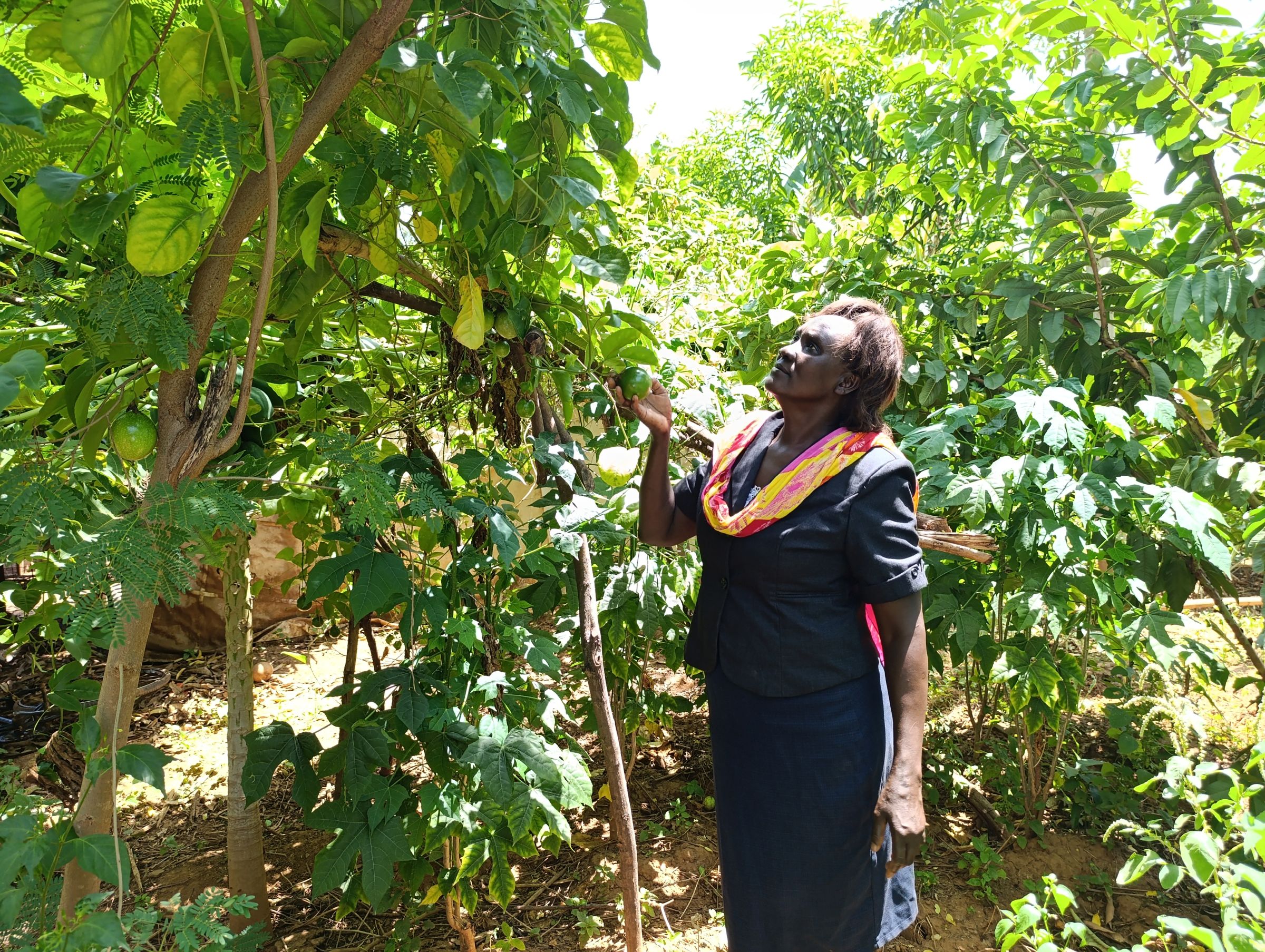
Water is essential
Not everyone is lucky enough to have a borehole, but some farmers in this part of Baringo county are beneficiaries of a program of the National Irrigation Authority. Koskei says the county government has established an irrigation scheme on 60 hectares (150 acres) of public land along the Perkerra River. To gain access to this, farmers apply for a permit from the authority and pay an annual service fee.
For this project, the county chose land strategically positioned at the meeting point of territory belonging to Ilchamus, Endorois and Pokot communities, in an effort to enhance integration between them.
“We mix freely at the scheme, men and women alike from the three communities, and this has built peaceful coexistence among us,” says Willy Kibillion, an Ilchamus herder. “Now I realize that crop farming pays, I have reduced my livestock by over a half as I create more land for planting vegetables, fruits, maize, beans and fodder.”
Kibillion concedes that men are reluctant to grant women access to land, but says shifting to farming is also prompting a shift in attitudes for many — including himself.
“When you allow [a woman] space for farming and to make decisions even when you are not there, she takes care of a number of things in a timely manner, especially ensuring there is food in the house,” he tells Mongabay.
The irrigation scheme has not run without problems. Koskei says conflict erupted in early 2024, with members of different communities attacking each other and vandalizing irrigation equipment. “We are now rehabilitating the scheme and getting them back to farming as they had abandoned the scheme after the fights.”
Koskei says the irrigation scheme is a crucial element for both food security and intracommunal peace in the county. Yator has urged the county government to provide better access to water for all smallholders in the area.
CIFOR’s Awiti, meanwhile, emphasizes the importance of understanding the value of sustainable farming practices in areas like Baringo, which receives barely 1,000 millimeters (40 inches) of rainfall annually. “The rain received here is not abundant enough to support high-biomass pasture and crop production,” he says.
“The question is really how do we create infrastructure that reduces pressure on natural resources so that they are not cutting trees, they can access water and make use of abundance of sunshine to produce energy, for example.”
The answers, he says, include thinking about more than just production, and accounting for access to land, fodder for animals, and affordable food for people.
“We really need to co-create solutions with the communities and help them change from mobility that is their lifeblood,” Awiti tells Mongabay.
Fairness and sustainability: Acting to restore African landscapes
The network IWGI belongs to, GLFx, is a collection of independent, community-oriented initiatives working to transform their landscapes and advocate for stronger policy. The network is aimed at strengthening local actors by connecting them with knowledge, tools and connections that can enable them to achieve sustainable results.
Other members of the GLFx network operating in Africa have also notched up meaningful gains, including in Cameroon, where forest and water source restoration offers sustainable solutions, and in Sierra Leone, where a group is helping farmers adapt to a changing climate.
Banner image: Salina Chepsat sorting tomatoes to transport to market in a nearby town in Baringo County, Kenya. Image by Gilbert Nakweya for Mongabay.
For Tanzania’s Maasai, adapting to climate change may mean less livestock, more trees
In Uganda, a women-led reforestation initiative fights flooding, erosion
Local NGO RAINS brings relief to Ghana’s semiarid north with regenerative farming
Drought & climate change force Ethiopia pastoralists to go job hunting
FEEDBACK: Use this form to send a message to the author of this post. If you want to post a public comment, you can do that at the bottom of the page.









